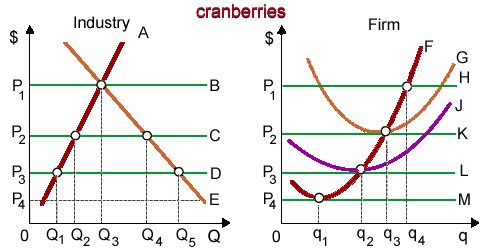At the price P1, the given figure of purely competitive cranberry industry is within: (w) long-run equilibrium. (x) short-run equilibrium. (y) market period disequilibrium. (z) short-run disequilibrium.

Can someone explain/help me with best solution about problem of Economics...